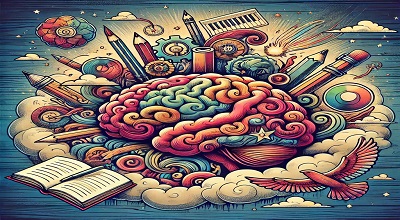Introduction to Creative Thinking
Creative thinking is the process of generating innovative ideas and solutions by approaching problems from new perspectives, breaking away from conventional patterns, and embracing imagination. It involves exploring unconventional avenues, making novel connections, and challenging established norms to produce original outcomes. Creative thinking is not restricted to artists or designers. It’s a crucial skill applicable across various domains. Including business, science, education, and everyday life. Let’s delve deeper into the essence of creative thinking and explore examples illustrating its diverse applications.
Flexibility in Thought
Flexibility in thought is a cornerstone of creative thinking. It involves being open-minded and adaptable, willing to entertain multiple viewpoints, and embracing uncertainty. Creative thinkers recognize that there’s seldom a single correct solution to a problem and are comfortable exploring different approaches.
Example: In the field of architecture, renowned architect Frank Gehry demonstrated flexibility in thought with his design for the Guggenheim Museum in Bilbao, Spain. Instead of adhering to traditional rectangular forms. Gehry employed unconventional shapes and materials, creating a structure that redefined modern architecture.
Associative Thinking
Associative thinking involves making unexpected connections between seemingly unrelated concepts or ideas. Creative thinkers excel at drawing parallels between disparate domains, leveraging analogies and metaphors to spark innovative insights.
Example: The concept of biomimicry, where designers and engineers draw inspiration from nature to solve human problems, exemplifies associative thinking. Velcro, invented by Swiss engineer George de Mestral, was inspired by the burrs. That stuck to his dog’s fur during a walk in the Swiss Alps.
Divergent Thinking
Divergent thinking refers to the ability to generate a multitude of ideas, exploring various possibilities without judgment or limitation. It encourages thinking outside the box and deferring judgment, fostering a conducive environment for creativity to flourish.
Example: Brainstorming sessions are a classic example of divergent thinking. Teams come together to generate as many ideas as possible, without critiquing or evaluating them initially. This free-flowing exchange often leads to breakthrough solutions that wouldn’t emerge through conventional thinking.
Risk-Taking
Creative thinking involves a willingness to take risks and embrace failure as an integral part of the learning process. It requires stepping out of one’s comfort zone, experimenting with new approaches, and being resilient in the face of setbacks.
Example: SpaceX, founded by Elon Musk, epitomizes risk-taking in the pursuit of innovation. The company’s ambitious goal of reducing space transportation costs and enabling human colonization of Mars necessitated numerous bold experiments and tests, including reusable rocket technology, which faced initial skepticism but ultimately revolutionized the space industry.
Visualization
Visualization entails mentally picturing concepts, ideas, or solutions, facilitating the exploration of possibilities, and refining creative concepts. Creative thinkers leverage visualization techniques to refine and communicate ideas effectively to others.
Example: Storyboarding in filmmaking is a visualization technique used to outline scenes and sequences of events visually. Filmmakers sketch rough illustrations representing each shot to map out the narrative flow, enabling them to visualize the final product before filming begins.
Conclusion
Creative thinking is a multifaceted cognitive process that encompasses flexibility in thought, associative thinking, divergent thinking, risk-taking, and visualization. By embracing creativity, individuals and organizations can tackle complex challenges, innovate, and drive progress across diverse domains. From architectural marvels to groundbreaking inventions, creative thinking manifests in myriad forms, shaping the world we inhabit and inspiring future generations to push the boundaries of imagination.
This exploration of creative thinking and its examples underscores its transformative power and its significance in navigating an increasingly complex and dynamic world. As we continue to cultivate and celebrate creative thinking, we pave the way for a future characterized by innovation, ingenuity, and limitless possibilities.
